The Secrets Behind a $5M+ Per Day Game (Clash of Clans Marketing)
Just over three years old, Clash of Clans rakes in more than $5M 1 2 3 each day and consistently charts in the top three grossing apps4. It’s the app that new game developers look to for inspiration.
However, the future didn’t always look so bright for the game’s creator, Supercell. In mid-2011 the year-old company realized their web- and Facebook-first strategy would never generate the hit game they needed 5 (this was late in the Facebook game fad), so they quickly shifted to a tablet-first strategy and killed all their old games6. At the time, smartphones - and particularly tablets - were an unproven market, but their daring strategy worked out.
By mid-2012, Supercell had launched one tablet game and killed two, but they were getting closer to the goal. Success finally came in May 2012 when the newly launched Hay Day quickly proved to be a hit. Following close on its heels, Clash launched in August 2012 and became the #1 top grossing game in the US within 3 short months7.
So how did they do it? After building half a dozen failed games, how did Supercell uncover such success with Clash (and Hay Day)?
It all starts with the most basic game design.
Start with a strong core loop
After you strip away all the frills and extras in a game, you’re left with the core loop. It’s the foundation of the game. In Pac-Man the core loop is: (1) Avoid ghosts (2) Eat dots (3) Complete maze (and then repeat)8.
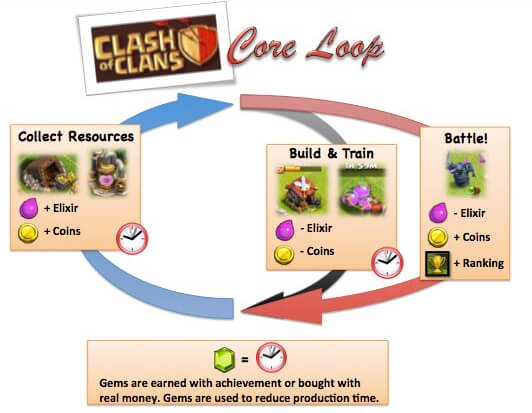
Clash of Clans’ core loop is actually pretty simple9. Everything revolves around harvesting resources: gold, elixir, and (later in the game) dark elixir. Using those resources, users can either build or battle before repeating the cycle. In the process, players steadily improve their “base” by upgrading various buildings (town hall, archery tower, gold mine, etc) and improve their rankings by winning trophies in battles with other players10.
Throughout this process, everything is interconnected. If you want a level 3 mortar, you need a level 5 town hall11. If you want a level 5 town hall, you need 150k gold12. If you want 150k gold, you need a level 6 and a level 7 gold storage unit13. This level of interdependence between game elements keeps the game exciting and gives users a long lifetime.
The brilliant success of Clash of Clans started in these structural, almost boring design choices. Nothing here was particularly new (Backyard Monsters was a remarkably similar predecessor from a different company), but new isn’t always better or even necessary. The Clash team crafted a game design skeleton that was already proven to work and then they executed better on it than anyone else.
Improve constantly
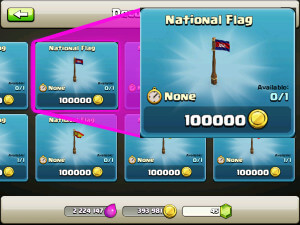 After completing the initial version of Clash, Supercell invested hundreds of employee hours simply playing their own game14. This soft “launch” (often called dogfooding) presented a low-risk opportunity to uncover potential problems.15 Once they had learned enough from their internal launch, Clash moved to it’s first country launch.
After completing the initial version of Clash, Supercell invested hundreds of employee hours simply playing their own game14. This soft “launch” (often called dogfooding) presented a low-risk opportunity to uncover potential problems.15 Once they had learned enough from their internal launch, Clash moved to it’s first country launch.
Instead of just going live worldwide or even within one of the larger markets, Clash launched to a smaller market where initial failure would be less risky. Since the initial target audience for Clash was the United States, they chose to launch first in Canada where they could reach a similar but smaller audience.16
Even today with all launches successfully completed, Clash continues to constantly test and iterate. Every few weeks, they create new game components designed to keep their top players engaged, and they keep an automated simulation running to make sure the game remains balanced despite new or modified soldier types.17
Growth Principle #2: Constantly seek to give your users a better product. (tweet this)
Look for free marketing
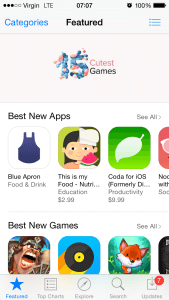 App acquisition costs run high, particularly in the competitive world of gaming apps. Today, Clash is a proven powerhouse that can spend lots on acquisition because revenues are high, but money wasn’t quite as plentiful at the beginning. When Clash first launched, Supercell wisely focused on free marketing.
App acquisition costs run high, particularly in the competitive world of gaming apps. Today, Clash is a proven powerhouse that can spend lots on acquisition because revenues are high, but money wasn’t quite as plentiful at the beginning. When Clash first launched, Supercell wisely focused on free marketing.
One free marketing tactic that drove a lot of downloads was getting featured within the app stores. Landing a featured placement in something like the iOS App Store is based on editorial decisions by a team at Apple. Getting in can be challenging, but it’s completely free and often very effective. By continually improving their app to be cutting edge, Clash made sure they were frequently ready when Apple’s editorial team wanted to highlight some new iPhone feature like retina screens18.
Similarly, when Clash expanded to Asia in 2013, they sought out cross-promotional partnerships with companies like GungHo Entertainment19. Much like the joint ventures popular in the affiliate marketing world20 (where two people swap ads to reach new audiences), these sorts of deals are often free (because you’re trading something that isn’t money). Before you spend money, look for possible symbiotic relationships with others in the market.
Use paid marketing strategically
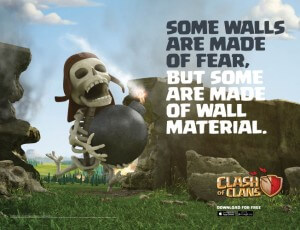 As their cash flow grew, Clash did begin investing quite heavily in paid media (some speculate as much as $1M per day)21. However, they still avoided the “spray and pray” approach of just spending in every direction; even with massive revenues, Clash wisely focused on just attracting people who will likely become deeply engaged22 (what are known as “whales”)23. And they tested everything.
As their cash flow grew, Clash did begin investing quite heavily in paid media (some speculate as much as $1M per day)21. However, they still avoided the “spray and pray” approach of just spending in every direction; even with massive revenues, Clash wisely focused on just attracting people who will likely become deeply engaged22 (what are known as “whales”)23. And they tested everything.
The most targeted ads run through platforms like Facebook where Clash can specifically filter their audience to people who are within the target age, income level, and who show interest in games. Often even more profitably, remarketing ads can be served to former users who haven’t been active for a certain period of time.
In addition to targeted online advertising though, Clash also has invested in more traditional formats like subway ads and even a popular Superbowl ad. Given the lack of direct tracking around these offline formats, it’s harder to measure exactly when the economics become favorable, but they could well be ROI positive given the sheer size of Clash’s target audience.
Make onboarding seamless
In the AARRR cycle of growth metrics, the top of funnel metrics have a more immediate impact and thus deserve earlier focus from companies. (If you can’t acquire users, you don’t even need to think about retaining them.) One of the trickiest top of funnel steps is onboarding. Once you’ve convinced a user to download your app or start a trial, your product has one chance to make a first impression that will convince the user to fully activate and come back in the future. 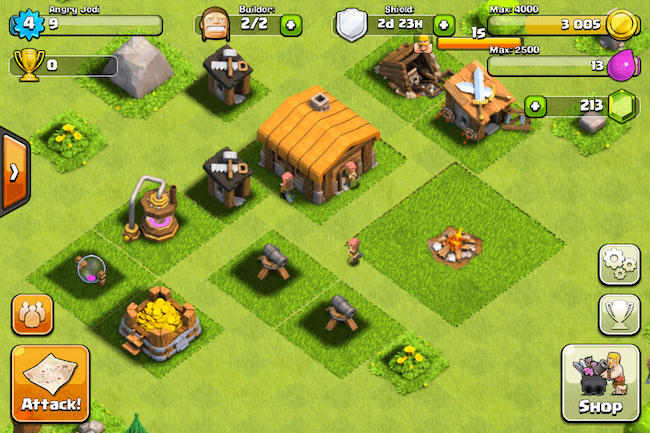
Clash is a complicated game with a lot of moving parts for new gamers to learn. This could be a problem if they didn’t work so hard to make the onboarding flow smooth and easy. When a new user joins the game, they’re immediately sent into a tutorial. However, unlike some of the “swipe right for page two” tutorials that just tell you stuff, the Clash tutorial actually talks you through your first building, first army, and first battle. I will never understand why so many apps still use boring interstitials for onboarding (I always skip them) rather than building an interactive flow.
Beyond explaining things clearly, the Clash tutorial also simply avoids many of the more complicated game aspects that aren’t needed yet24. As a beginning player still trying to figure out how to train troops, you don’t need to worry about joining a clan yet. So instead of handing new users a textbook on day one, they sprinkle the more complex concepts throughout the game play. Somewhere around day seven, you’ll notice the broken down castle near your property, and on reaching level 3 townhall25 you’ll be able to rebuild that castle to join a clan. By teaching you what you need when you need it, Clash makes the initial tutorial shorter and keeps users engaged longer by continually unveiling new gameplay26.
Make daily engagement core to your product
Once they’ve activated users through the immersive tutorial, Clash uses more than a few well designed habit loops to bring people back. In Hooked, Nir Eyal describes these habit loops as (1) trigger, (2) action, (3) reward, (4) investment27. The trigger gets a user’s attention with something external (a notification) or internal (an in-product prompt). The action is immediate (clicking the notification or following the in-product prompt). The reward should be variable (attacking another player in Clash isn’t guaranteed to result in a win). And the investment is an action with no immediate reward (like training more troops or building a better town hall).

Clash relies heavily on notifications to bring users back initially (“your building is finished” or “your troops are trained”)28, but as you become more engaged the trigger becomes more intrinsic29. Supplies (gold and elixir) must be “harvested” to central storage or else the harvesting machines will overflow and stop collecting more. Other players can only attack when you’re offline, so if you’re saving up supplies for a large purchase you’ll want to log in often to keep other players at bay30.
Once users are in the game, Clash encourages specific actions (mostly to attack other players), and the rewards are naturally variable (sometimes you win; sometimes you lose). And on the investment side, Clash provides a nearly endless runway to continually upgrade and add on to your home base.
All of this culminates in an average of 12 sessions per day per user across Clash and Hayday and millions of daily battles between users on Clash31.
Build everything with revenue in mind
Like Vegas casinos, Clash makes most of it’s money off whales - players who are willing to spend large amounts of money on the game. The majority of users only spend the occasional Washington32 33, but some of the highest spenders can drop up to $12k34. To develop these whales early and often, Clash weaves incentives and prompts throughout the entire fabric of the game. 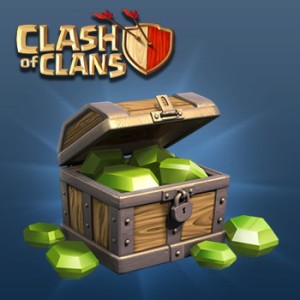
1. Introducing the concept. When you’ve first downloaded the game, you will have 500 gems (in-game currency)35. During the tutorial, you will be told to spend some of these gems to speed up building or troop training. As you leave the tutorial, you now feel like gems are a natural part of the game.36
2. Building the habit. Moving into actual game play, you quickly run out of gems, but if you’re like me you’re probably not ready to buy anything yet. After less than an hour of play, I’m still figuring out whether I like the game - definitely not ready to invest anything yet. Clash knows this, so they sprinkle a few free gems literally in the bushes on your settlement. As you clean up the scattered stumps and bushes, you’ll occasionally uncover free gems.37 Of course, this helps build the habit of using gems to speed up the game.
3. Prompting purchase. The entire game can be played without any use of gems, and the upsells to buy gems aren’t even all that annoying. Everything is user triggered: If I do nothing, I won’t see any prompts to buy gems, but if I train troops, I’ll see a little reminder that I can spend x gems to finish now. If I try to build my archer tower while all my builders are busy, I’ll see a gentle prompt to spend x gems to finish a building and free up a builder for my next project. If you don’t have gems, clicking to spend gems will load a prompt to buy gems - which can be done in moments through in-app payments.38
Gems are not money. We hate spending money (at least I do). If Clash asked me to spend $10 to speed up building, I’d feel far too guilty to agree, but if I have the option to spend 800 gems to speed up building I could very well go for it. As humans, we have a lot of feelings and emotions around money, but if you just provide a small separation between actual money and in-game currency we feel much better about spending it.39
Looking forward
With three years of chart topping success, Clash has already outperformed and outlived most mobile games (see Flappy Bird or Trivia Crack which both lasted for about two months). With frequent updates and solid marketing strategy, they have managed to attract and keep a steady stream of users. 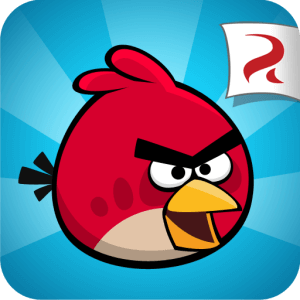
Over the years to come, Supercell will have a choice to make. Like most of the gaming industry, they can build different games with the hope of attaining similar success. Or they can continue heavily marketing Clash by reengaging former users like myself once the stream of brand new users slows. From the look of it, they seem to be trying both options.
Way back in the early days, Supercell’s CEO pointed to Rovio, the maker of Angry Birds, as a source of inspiration40. Today, Supercell must prove that the student can excel the teacher. After years of brilliant success, Rovio’s operating profit dropped 73% last year41 as they have struggled to either maintain the glory days of Angry Birds or create similarly successful games.42
Where will Clash be in 3 more years?
-
Clash of Clans is now the top-grossing game on iOS and Android ↩︎
-
Image credit: 6 Free-to-Play Design Lessons from Clash of Clans to Engage Players and Increase Profits ↩︎
-
Image Credit: Cambodia flag request thread ↩︎
-
Image credit: How to Manufacture Desire: An Intro to Hooks ↩︎
-
Time is money: How Clash of Clans earns $500,000 a day with in-app purchases ↩︎
-
Why ‘Clash Of Clans’ Is So Incredibly Popular, According To A Guy Who Plays 16 Hours A Day ↩︎
-
Time is money: How Clash of Clans earns $500,000 a day with in-app purchases ↩︎
-
6 Free-to-Play Design Lessons from Clash of Clans to Engage Players and Increase Profits ↩︎
-
6 Free-to-Play Design Lessons from Clash of Clans to Engage Players and Increase Profits ↩︎
-
How to Add ‘Clash of Clans’-Levels of Addictiveness to your Product ↩︎
-
The Story Behind The Supercell Deal: Interview With CEO, Ilkka Paananen ↩︎
-
Interestingly, the profit drop was tied to merchandising and licensing - direct gaming revenue actually grew slightly. ↩︎